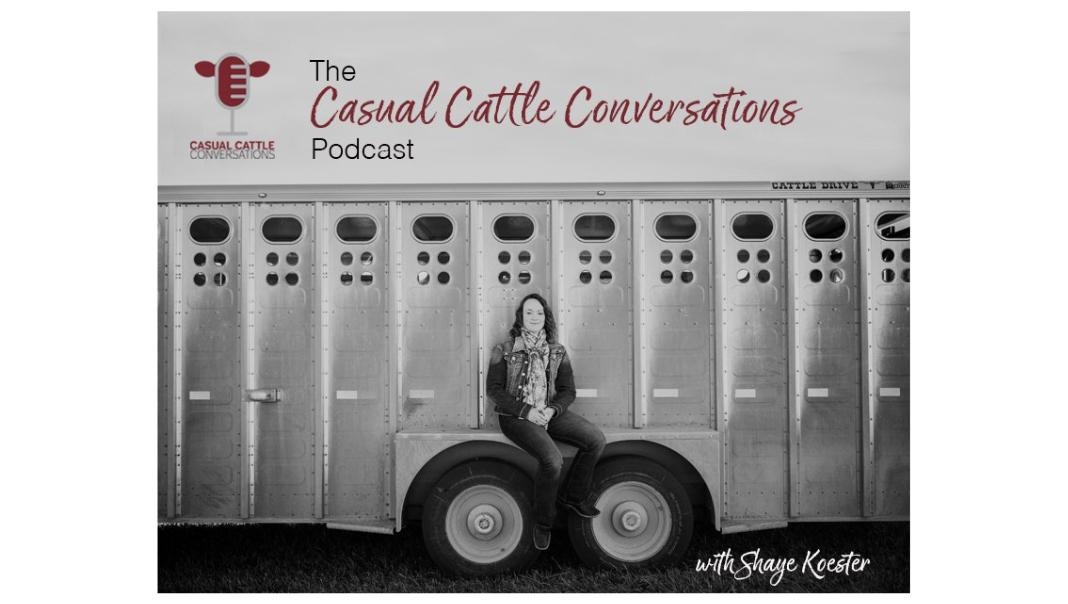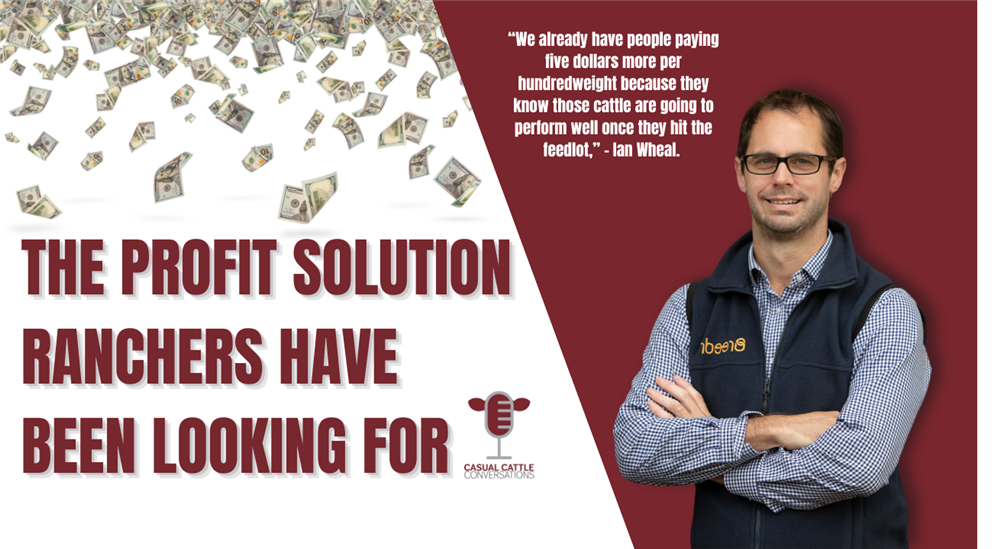The Casual Cattle Conversations Podcast: Connecting the Chain: Collaboration and Profitability in Modern Ranching
Thursday, January 2, 2025
Reference: Podcast Corner

Connecting the Chain: Collaboration and Profitability in Modern Ranching
December 30, 2024 | Written By Shaye Koester
Raising irresistible cattle for feedlots, packers, retailers and consumers might be easier to attain than you think. Various marketing avenues and supply chains might focus on different qualities and characteristics but at the end of the day it all comes down to a desire for continuous improvement from ranchers.

Click Here to listen to Shaye's Podcast
“We spend a lot of time talking to retailers. The number one thing they're asking for after high-quality beef with consistency and security of supply is continuous improvement from producers,” says Ian Wheal – Founder and CEO of Breedr.
Ian and Suzy Wheal have spent over six years developing Breedr – a herd management and integrated supply chain app – to help ranchers collect, analyze and leverage their data with ease.
“If we can put data in the hands of producers, that is the fastest way for us to produce higher quantities of higher quality beef with less resources,” says Suzy– head of marketing and communications at Breedr.
While data has been collected on the ranch level for decades, the Breedr team has a game-changing mindset for how this data should be used and shared. The Breedr program challenges the linear model of the beef supply chain. Instead of individual animals getting passed to the next segment with little to no data following, the data is shared from rancher to feeder to packer and back to the rancher. It is a full-circle system.
“It’s about mutual gain. If one stage in the beef supply chain is improving, it lifts everyone else up with it,” says Suzy.
When ranchers get data back related to feedlot performance, carcass quality and overall health, they can rapidly increase their rate of improvement in these areas through genetic selection, culling, nutrition and health protocols.
“People say it takes ten years to improve our genetics. In an industry that faces pressures from the commercial, profitability, consumer, sustainability and legacy perspectives; we need to move faster than that,” says Ian.
An example of the impact of a complete feedback loop is a supply chain in Texas who went from doing 5% prime and 16% select carcasses on average to 21% prime and 5% select in just two years.
One of the first benefits ranchers see from implementing digital data management systems is time savings and increased accuracy of records. After that, they begin to analyze weaning weights, carcass data and health records when making culling and selection decisions.
Suzy says, “The bottom 20% of your herd eats the profit from the top 20% of your herd,” It is a low-hanging fruit to identify the cattle that aren’t serving you. This could look like a cow that weans a calf that’s consistently and significantly lighter than the rest each year or a sire that isn’t producing high-performing progeny just to share two examples.
This system seems like a no-brainer for ranchers who are focused on continuous improvement but do the other sectors of the beef industry truly want to share data back to the producer?
“Cattle are expensive right now, so feedlots want to work with people who have health protocols and cattle that will grow in the feedlot and grade at the packer,” says Ian.
The Breedr team has found ranchers, feedlots and packers who want to collaborate and help the full system improve. Breedr is focused on building long-term relationships between industry stakeholders and giving data back to producers with side recommendations about culling and other practices.
“We already have people paying five dollars more per hundredweight because they know those cattle are going to perform well once they hit the feedlot,” says Ian.
Data sharing and ownership is always a concern amongst producers and for valid reasons, however, the value of sharing can outweigh the value of keeping it on the ranch. Ian says, “Most of the data you are sharing is already shared on a sale listing but you don’t receive anything in return…If you are selling your cattle without information, you are really doing yourself a disservice.” The reality is data will continue to be collected and multiply throughout the lifetime of an animal and having access to it matters.
The biggest risk of entering a full-circle system like this is not having your entire team on the same page. “As a rancher, you may want to do it and have a great mindset about it, but are your cowboys and other employees on the same page for continuous improvement as you?” You want to build a culture of continuous learning and improvement on your operation to make the most of this type of system.
A full-circle system isn’t for everyone, but it is for ranchers who want to learn from past decisions and get better each year. Regardless of size or age, there’s room for your operation in this system. Breedr’s oldest user is 98-years-old! It’s for people who want to stay ahead of the curve and don’t want to be left behind in the years to come.
Learn more about this system and how your ranch might be a fit by signing up for the Breedr newsletter at breeder.co
Sign up to stay connected
- News
- Property Alerts
- Save your favourite properties
- And more!
Joining Farm Marketer is free, easy and you can opt out at any time.
